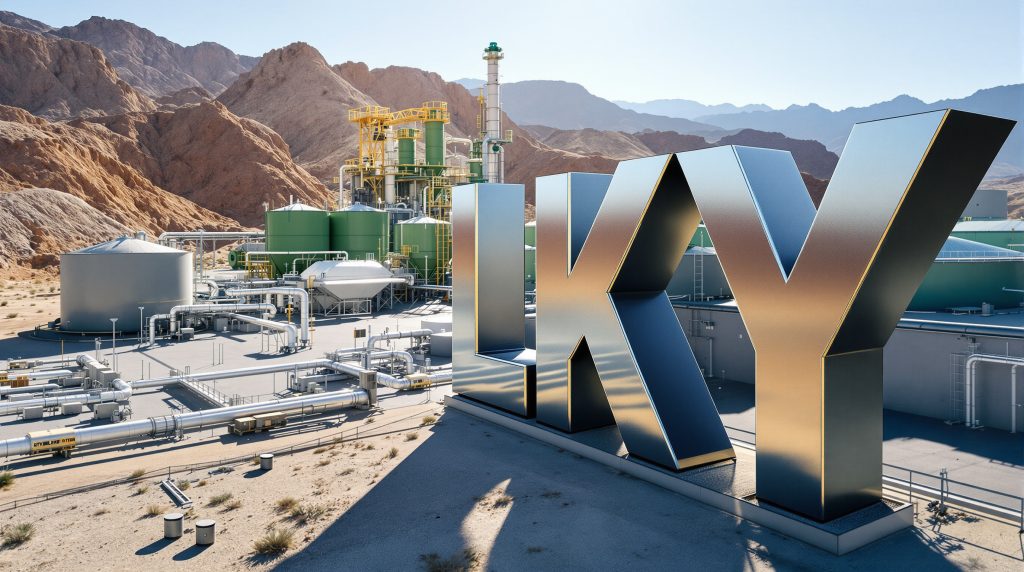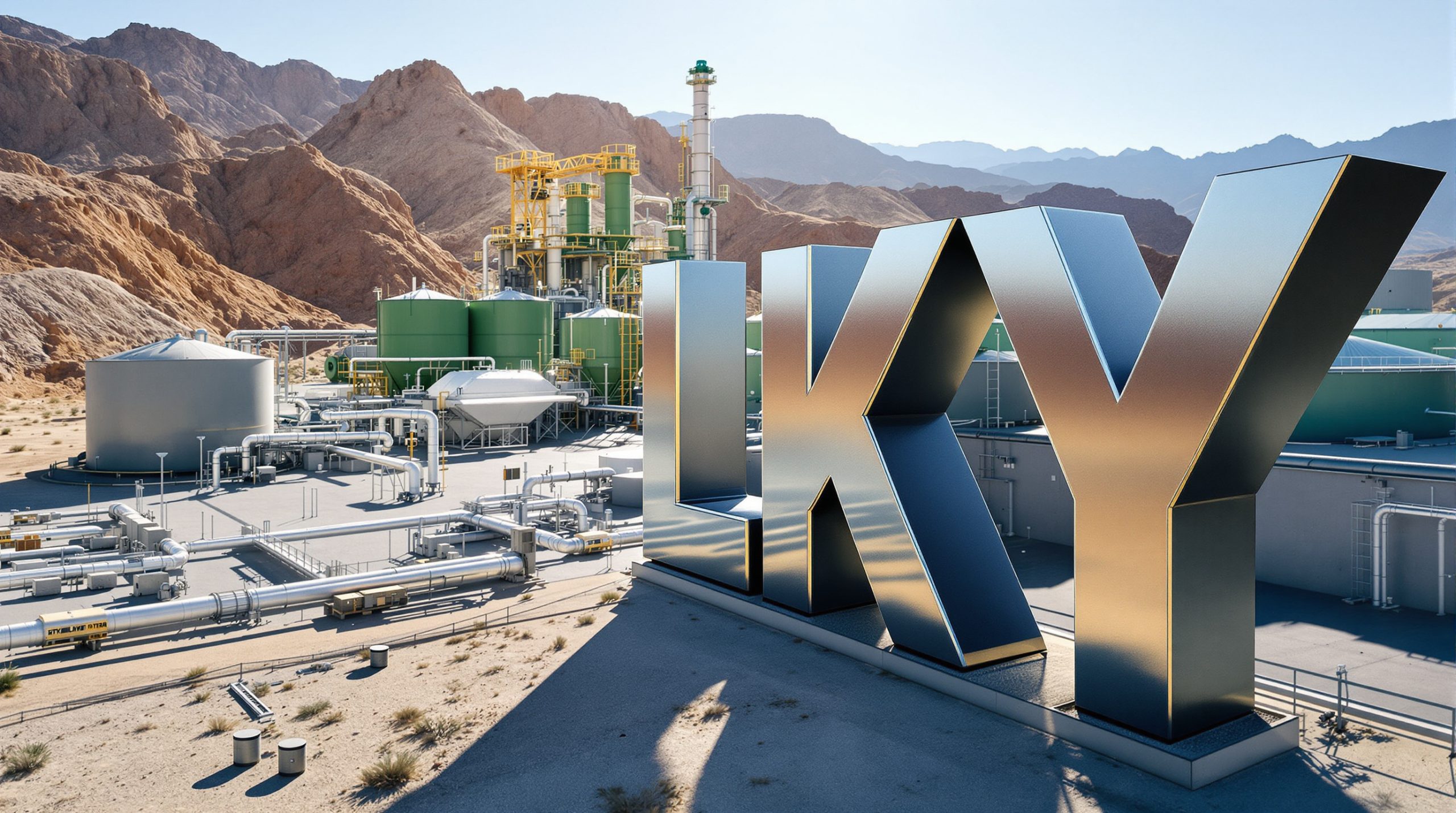Locksley Resources (ASX: LKY) has delivered a significant update on its collaborative research programme with Rice University, marking substantial progress toward commercialising Locksley Resources green technology for antimony extraction. The company's Deep Eutectic Solvent (DES) system, branded as DeepSolv™, represents a potentially game-changing approach to sustainable critical mineral processing.
Rice University Partnership Delivers Key Technical Milestones
The research collaboration with Rice University's Advanced Materials Institute has achieved several critical breakthroughs that position Locksley closer to commercial-scale production. Chief Operating Officer Danny George's recent site visit to Houston revealed encouraging developments in the laboratory-scale programme led by Professor Pulickel Ajayan.
Key technical achievements include:
• Preliminary process parameters established for the green hydrometallurgical DES process
• Strong selective dissolution capabilities demonstrated for antimony sulphides under mild conditions
• Mass-balance considerations assessed in preparation for pilot plant scaling
• Solvent recovery efficiency and reagent stability evaluated for commercial viability
The DES system utilises environmentally benign ionic mixtures as an alternative to traditional harsh chemicals. Furthermore, this represents a major advancement toward low-emission, sustainable antimony production.
Management Insight:
"The novelty of the DES-based process lies specifically in the solvent chemistry and its enhanced selectivity for antimony dissolution, representing a true breakthrough in reagent innovation rather than a complete process redesign." – Danny George, Chief Operating Officer
Understanding Deep Eutectic Solvents: The Technology Behind the Breakthrough
Deep Eutectic Solvents (DES) represent a class of green solvents formed by mixing specific combinations of compounds that create a liquid with unique extraction properties. Unlike traditional harsh chemical processes used in metal extraction, DES systems operate under milder conditions whilst maintaining high selectivity for target metals.
The technology works by creating ionic liquid mixtures that can selectively dissolve specific minerals whilst leaving others untouched. Consequently, this selectivity is crucial for antimony processing, as it allows for cleaner separation and reduces the need for multiple processing steps.
Why This Matters for Investors:
• Environmental advantage: Significantly reduces toxic waste and emissions compared to conventional processing
• Cost efficiency: Lower energy requirements due to mild operating conditions
• Regulatory compliance: Aligns with increasingly strict environmental regulations
• Scalability: Uses established downstream hydrometallurgical methods for commercial implementation
The technology's ability to selectively dissolve antimony sulphides whilst leaving other minerals untouched represents a significant competitive advantage in processing efficiency. In addition, this selectivity could translate to higher recovery rates and lower processing costs compared to traditional methods.
Strategic Development Timeline and Next Steps
Locksley has outlined a clear pathway toward commercial implementation of the Locksley Resources green technology:
Immediate Phase (Q4 2024 – Q1 2025):
• Delivery of flotation concentrates and ROM ore samples from Desert Antimony Mine (DAM)
• Expanded testwork programme using Los Lirios deposit materials
• Pilot demonstration plant scoping based on laboratory results
Medium-term Objectives:
• Construction and operation of pilot demonstration plant
• Scale-up validation of DES process parameters
• Integration with existing Desert Antimony Mine development plans
The company's approach of combining academic innovation with industry experience creates a foundation for transitioning from laboratory success to commercial application. However, the next phase will focus on testing the technology with actual ore samples from Locksley's projects, providing more realistic performance data.
Investment Thesis: Critical Mineral Independence Meets Green Technology
Locksley Resources presents an investment opportunity at the intersection of U.S. national security priorities and sustainable processing innovation. The company's integrated approach addresses multiple market dynamics:
| Strategic Advantage | Market Opportunity |
|---|---|
| 100% American supply chain | U.S. currently has zero domestic antimony production |
| Green processing technology | Growing regulatory pressure on traditional extraction methods |
| High-grade resource base | Desert Antimony Mine represents one of highest-grade known U.S. occurrences |
| Strategic location | Mojave Project directly adjacent to MP Materials' Mountain Pass Mine |
Geopolitical Context:
The urgency to diversify critical mineral supply chains away from China-dominated markets has created support for domestic production capabilities. For instance, antimony's essential role in defence systems, semiconductors, and metal alloys positions Locksley's American-made supply chain as strategically relevant.
China currently dominates global antimony production, creating supply chain vulnerabilities for Western nations. Furthermore, the U.S. government has identified antimony as a critical mineral, highlighting the strategic importance of domestic production capabilities.
Technology Differentiation:
The DeepSolv™ system's combination of environmental sustainability and processing efficiency addresses two critical industry challenges simultaneously. Consequently, this may create competitive advantages for the company.
Market Position and Competitive Advantages
Locksley's positioning in the critical minerals sector stems from several converging factors:
Resource Quality: The Desert Antimony Mine's historical significance and high-grade surface samples provide a foundation for commercial production. The mine last operated in 1937 and represents one of the highest-grade known antimony occurrences in the U.S.
Technology Innovation: Partnership with Rice University delivers processing advantages through proprietary solvent chemistry. The collaboration with Professor Pulickel Ajayan's team provides access to cutting-edge materials science research.
Strategic Timing: Rising geopolitical tensions and supply chain security concerns create market conditions that may favour domestic critical mineral producers. In addition, the Locksley Resources green technology aligns with growing environmental regulations.
Integrated Approach: The mine-to-market strategy aims to eliminate intermediate steps and capture value across the supply chain.
The Mojave Project's location is particularly strategic, being directly adjacent to MP Materials' Mountain Pass Mine. This demonstrates the geological potential of the region for critical mineral production.
Technical Progress and Commercial Viability
The Rice University collaboration has focused on several key technical parameters:
Solvent Composition: Optimising the ionic mixtures for maximum antimony selectivity
Leach Kinetics: Understanding dissolution rates under various conditions
Reagent Recyclability: Ensuring the solvents can be reused efficiently
Temperature Optimisation: Maintaining mild conditions whilst achieving effective extraction
These technical developments are reportedly being evaluated for correlation with commercial-scale process configurations. However, mass-balance considerations are being assessed in preparation for scaling up to a pilot demonstration plant.
The downstream processing stages are reported to utilise established hydrometallurgical methods. This could provide a pathway toward commercial scalability and regulatory acceptance.
Financial Considerations and Market Access
With 276,498,961 shares on issue and trading on multiple exchanges (ASX: LKY, OTCQX: LKYRF, FSE: X5L), Locksley offers accessible exposure to the critical minerals theme. Furthermore, the company's multi-exchange listing provides liquidity options for international investors.
The upcoming pilot demonstration plant represents a potential inflection point that could validate commercial viability. Success at this stage might attract strategic partnerships or government support, given the national security implications of domestic antimony production.
For instance, the development of Locksley Resources green technology could position the company favourably with environmental, social, and governance (ESG) focused investors.
Why Investors Should Monitor Locksley Resources
The convergence of breakthrough green technology, high-grade antimony resources, and U.S. strategic priorities creates a unique investment proposition. Locksley's methodical approach to commercialising the DeepSolv™ technology, backed by academic research, positions the company to potentially capitalise on critical mineral market dynamics.
The collaboration with Rice University provides credibility and technical expertise that could differentiate Locksley from other resource companies. Furthermore, the focus on environmentally sustainable processing aligns with increasing regulatory and investor emphasis on ESG considerations.
Investment Catalyst Timeline:
• Q4 2024-Q1 2025: Expanded testwork results and pilot plant scoping
• 2025: Pilot demonstration plant construction and operation
• 2025-2026: Commercial-scale production planning and implementation
The combination of proprietary green technology, strategic U.S. resource assets, and academic partnerships positions Locksley as a potential participant in the critical minerals independence movement. However, investors should note that the technology remains in development, and commercial success will depend on successful scaling from laboratory to production levels.
Is Locksley Resources the Critical Minerals Play You've Been Looking For?
With breakthrough green technology, strategic U.S. antimony resources, and a clear pathway to commercialisation, Locksley Resources presents a compelling investment opportunity at the intersection of national security priorities and sustainable processing innovation. The company's proprietary DeepSolv™ system, developed in partnership with Rice University, could potentially revolutionise antimony extraction whilst addressing critical supply chain vulnerabilities. To explore how Locksley's integrated mine-to-market strategy and innovative processing technology could position the company in the growing critical minerals sector, visit Locksley Resources for comprehensive investor information, project updates, and detailed technical reports.




